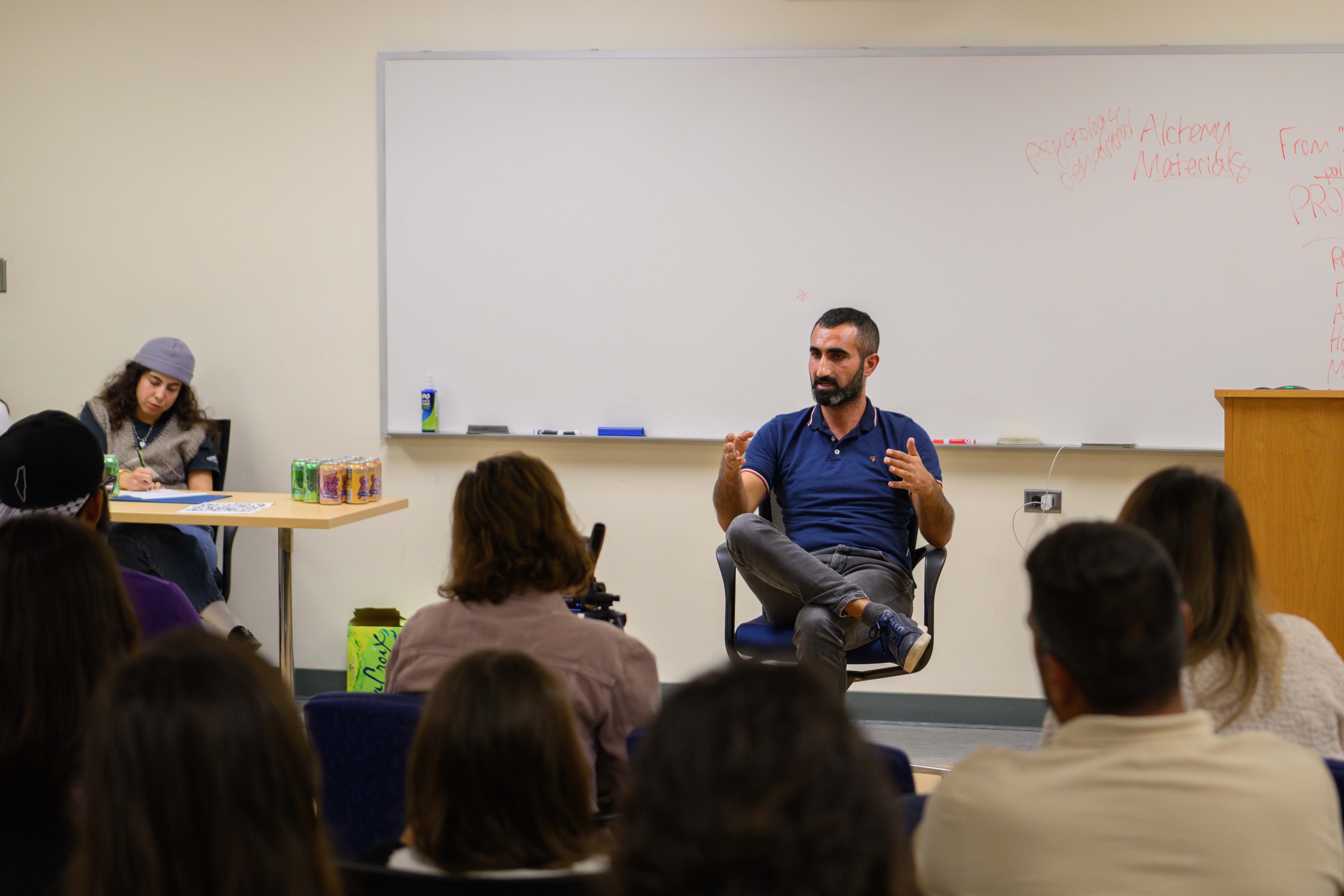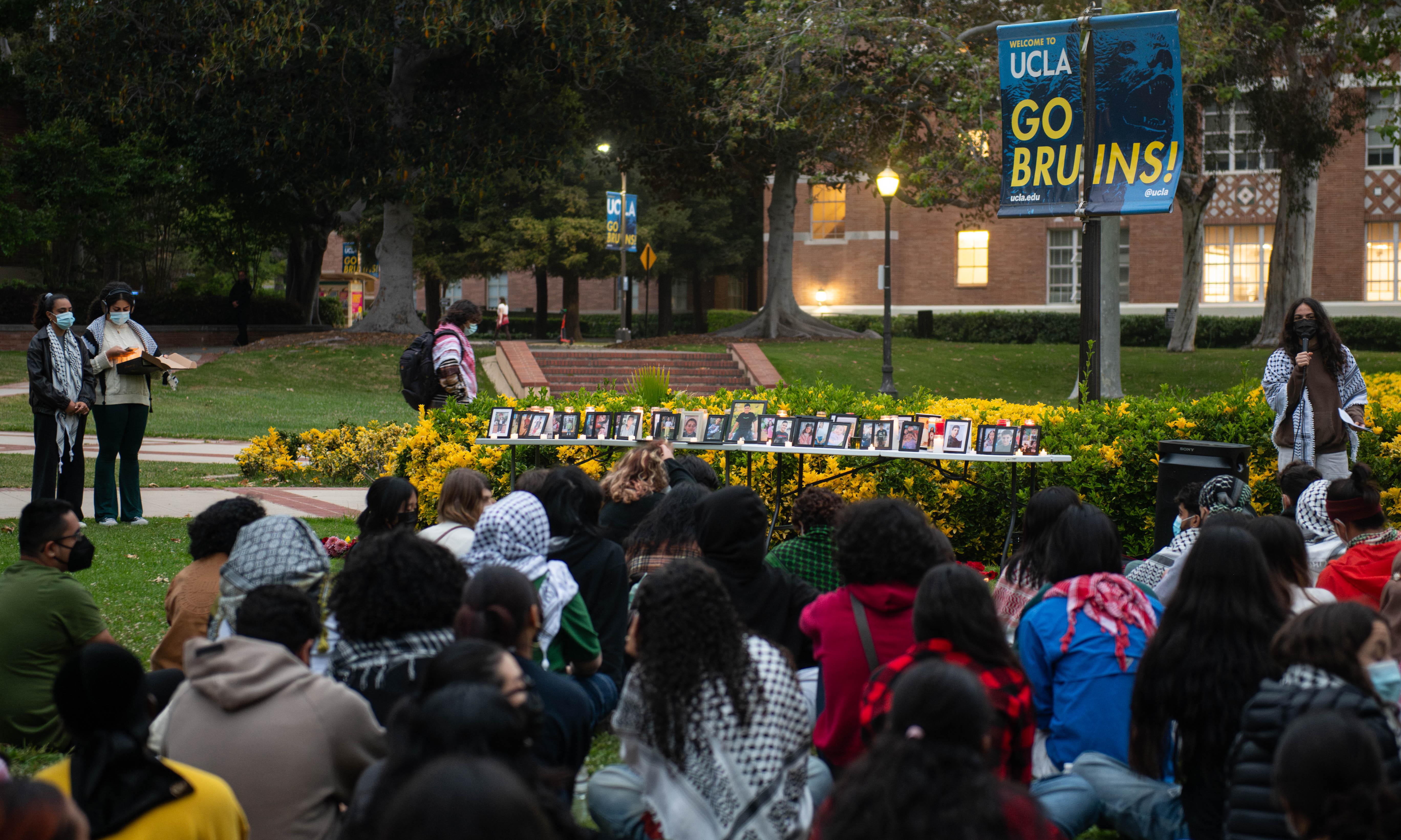Palettes for Peace art exhibition raises money for Palestinians affected by war
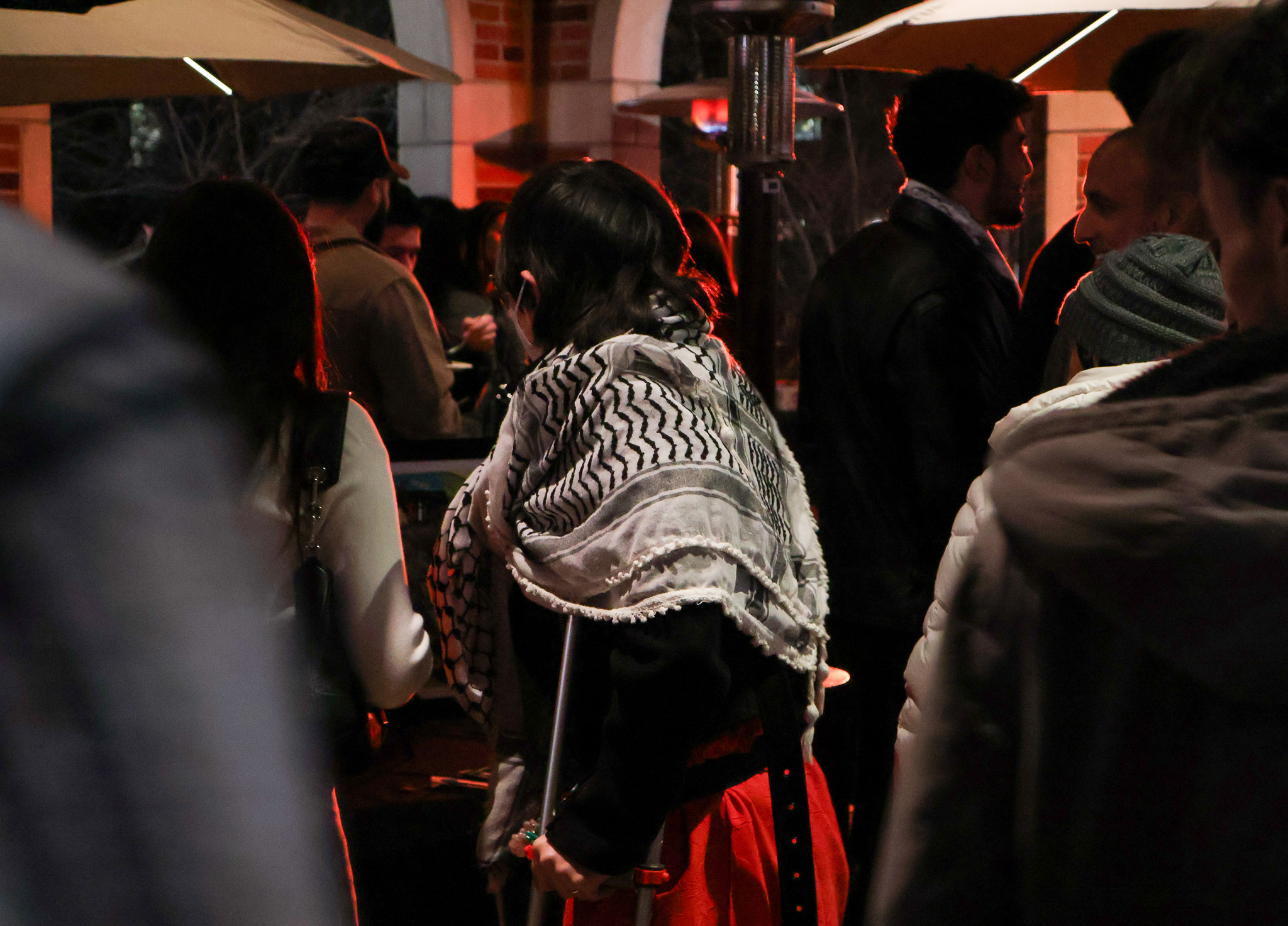
Attendees view artwork at the “Palettes for Peace” event Saturday, hosted by the Palestine Children’s Relief Fund at the Fowler Museum to raise money for the PCRF and the American University of Beirut’s humanitarian aid in the Middle East. (Maggie Konecky/Daily Bruin) Photo credit: (Maggie Konecky/Daily Bruin)
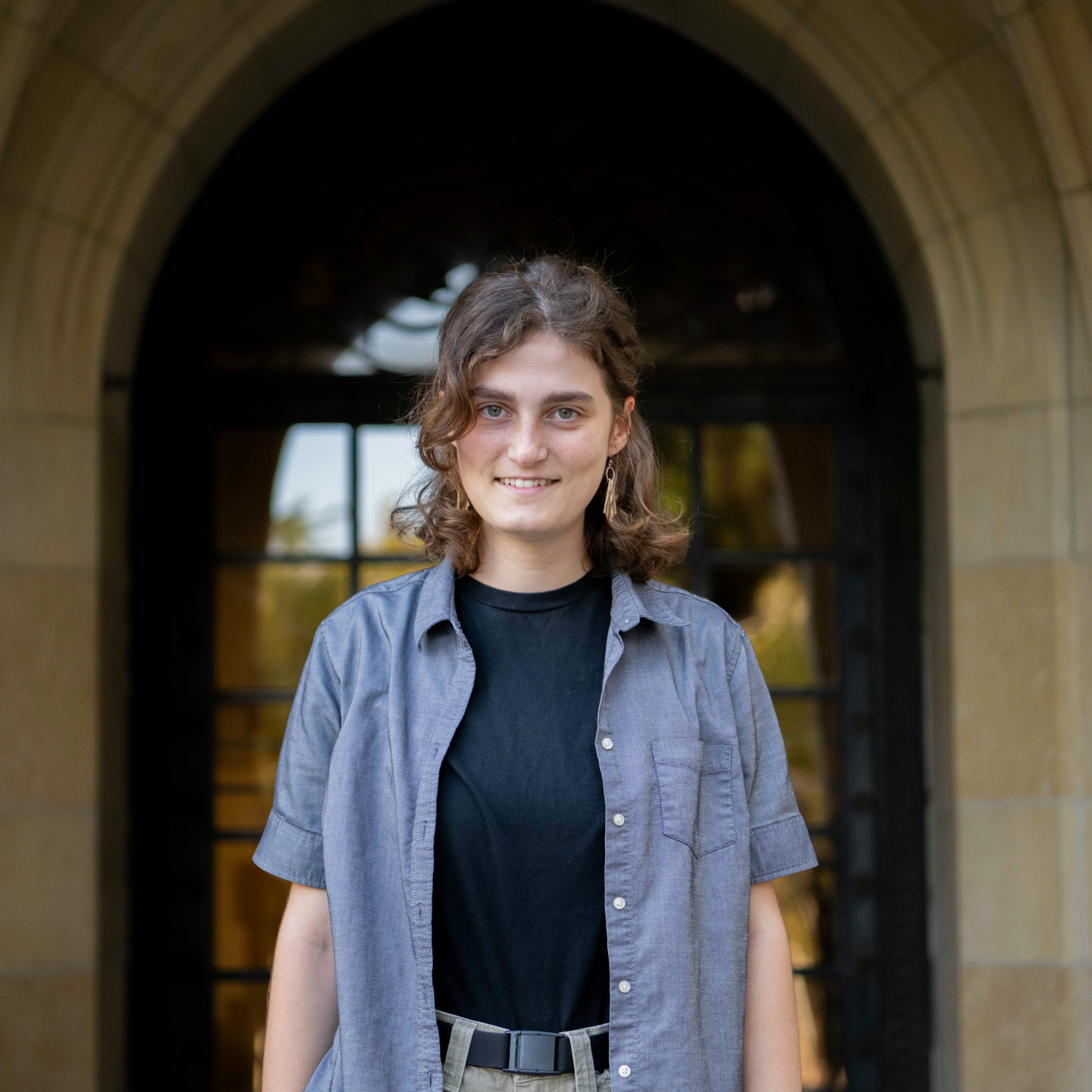
By Maggie Konecky
Jan. 28, 2025 11:20 p.m.
This post was updated Jan. 29 at 2:34 p.m.
When Dean Bruton told his aunt he was organizing an art auction for the Palestine Children’s Relief Fund, she offered to give him every Palestine-related heirloom in her closet.
“I took only the things she wouldn’t be absolutely heartbroken by if they were sold to someone else,” said Bruton, a second-year environmental science student and member of the PCRF’s UCLA branch. “I’m glad to see that people are bidding.”

PCRF collaborated with UCLA’s Muslim Student Association and Middle Eastern Student Association to host the second annual “Palettes for Peace” art exhibition and silent auction Saturday at the Fowler Museum. Attendees packed shoulder-to-shoulder onto the museum’s terrace as they browsed tables, chatted and bid on different artwork.
The event’s proceeds have been pledged to the PCRF and the American University of Beirut’s humanitarian aid in the Middle East, according to UCLA PCRF’s Instagram.
The first Palettes for Peace event at UCLA took place last year, three months after the Israeli military’s invasion of the Gaza Strip, which displaced 90% of the 2.3 million people who live there and killed over 46,000 people in response to the Oct. 7 Hamas attacks, according to the Associated Press. There has now been a ceasefire for over one week in the region.
Syaal Sharifzad, a fourth-year civil engineering student and PCRF member, said he helped organize funding for the event and contributed some of his own calligraphy – an art form he has practiced since high school. Sharifzad said his piece drew on the foundations of Afghan and Central Asian culture and incorporated a verse from the Quran about “the struggle of fighting for what’s right.”
“Not necessarily fighting – that’s not the right word,” Sharifzad said. “The word used is ‘yuhajir,’ which means travel. … This (time at UCLA) is a transient period in our lives, which is four years. We want to make as much change – as much positive change as possible – because we’re so blessed to have this opportunity or this privilege to be UCLA students.”
Other attendees said they believed artwork could help showcase Palestinian culture. Maryan Mohamed, a first-year psychobiology student and MSA member, said she hoped the event would humanize the Palestinian people in ways she thought American media shied away from or shadowed.
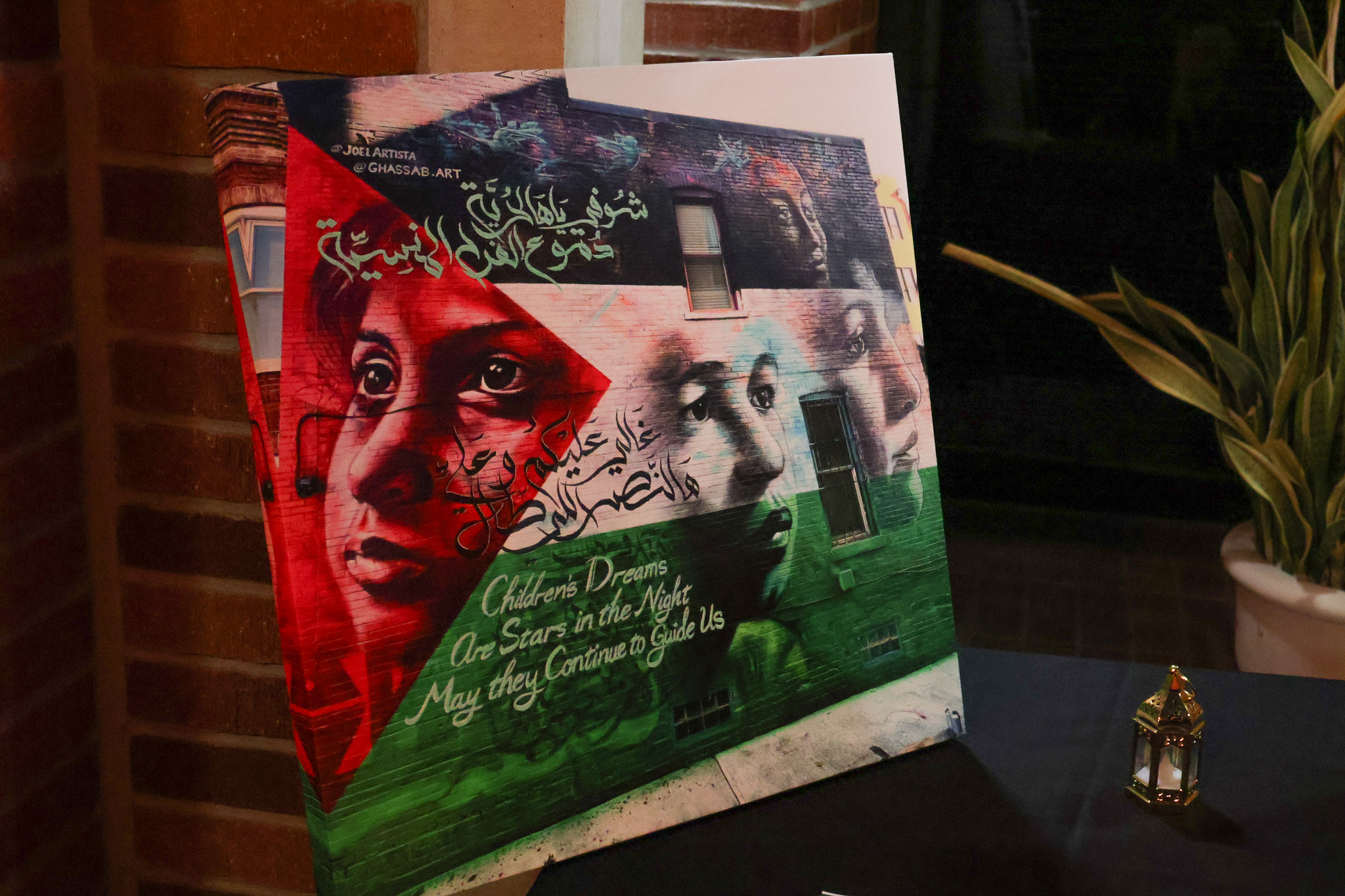
Hasan Jebory, a UCLA alumnus, said he believed art-focused events such as Palettes for Peace “brought out the best” in the larger community. He referenced two pieces that particularly moved him: a portrait of three Palestinian women with hunting rifles under an olive tree and a painting of a man with a keffiyeh – a traditional Palestinian scarf – wrapped around his head, titled, “The Gaze of a Hero.”
“There’s a very slight reflection in his eyes, but you can’t tell what it is,” Jebory said. “Something about it was deeply moving – like I was looking directly at him or he was looking at me.”
PCRF at UCLA calls itself a “non-political, secular club” and said on its Instagram that the exhibit was focused on art displaying “Palestinian culture and themes of resistance.” However, the event’s advertising drew criticism from UCLA’s Jewish Faculty Resilience Group. Its letter asking the organizers to change its posters and imagery garnered over 900 signatures within six days.
In an emailed statement to the Daily Bruin, UCLA’s JFRG Chair Kira Stein said the group was concerned about the images used to advertise Palettes for Peace but that it supported any initiatives promoting “peace and resolution in the Middle East.”
The letter specifically accused illustrations of a paraglider landing in the desert and a map of Israel wrapped in keffiyeh patterns of being “pro-terror” imagery – both images remained present on an online poster and at the show itself. The map illustration also depicts Palestinian territories.
Palettes for Peace’s organizers found the letter disheartening but not surprising, said Rayan, a member of PCRF’s leadership who requested to remain partially anonymous because they were concerned about being harassed. They added that the event was never meant to cause controversy and focused only on providing medical aid to those affected by violence.
Three protestors with an Israeli flag and poster for the Facebook group “Moms Against College Antisemitism” were at the entrance to the Fowler Museum at 5:15 p.m., but they left within the first half of the event.
UCPD officers were alerted to their presence just before 6 p.m. but found no violation of UCLA’s Time, Place and Manner policies, according to a statement from Jeffrey Chobanian, the UCPD Acting Captain of the Administrative Bureau. The protesters were not affiliated with JFRG, Stein said in her statement.
Despite the challenges Palettes for Peace faced after its five-month planning period, Rayan said they were proud that the turnout included families from around Los Angeles in addition to UCLA students.
Elderly couples, parents with toddlers, college students and youth organizers were present at the event. In addition to the artwork, young adults manned tables of food, and vendors sold everything from coffee to jewelry and handmade crafts. Event posters called for formal wear and traditional clothes, with attendees’ outfits incorporating designs from cultures that spanned multiple continents.
“You get to meet a bunch of different people – they’re all similar but also have different demographics, so seeing them come together is interesting and fun,” Sharifzad added. “We’re trying to set the precedent.”
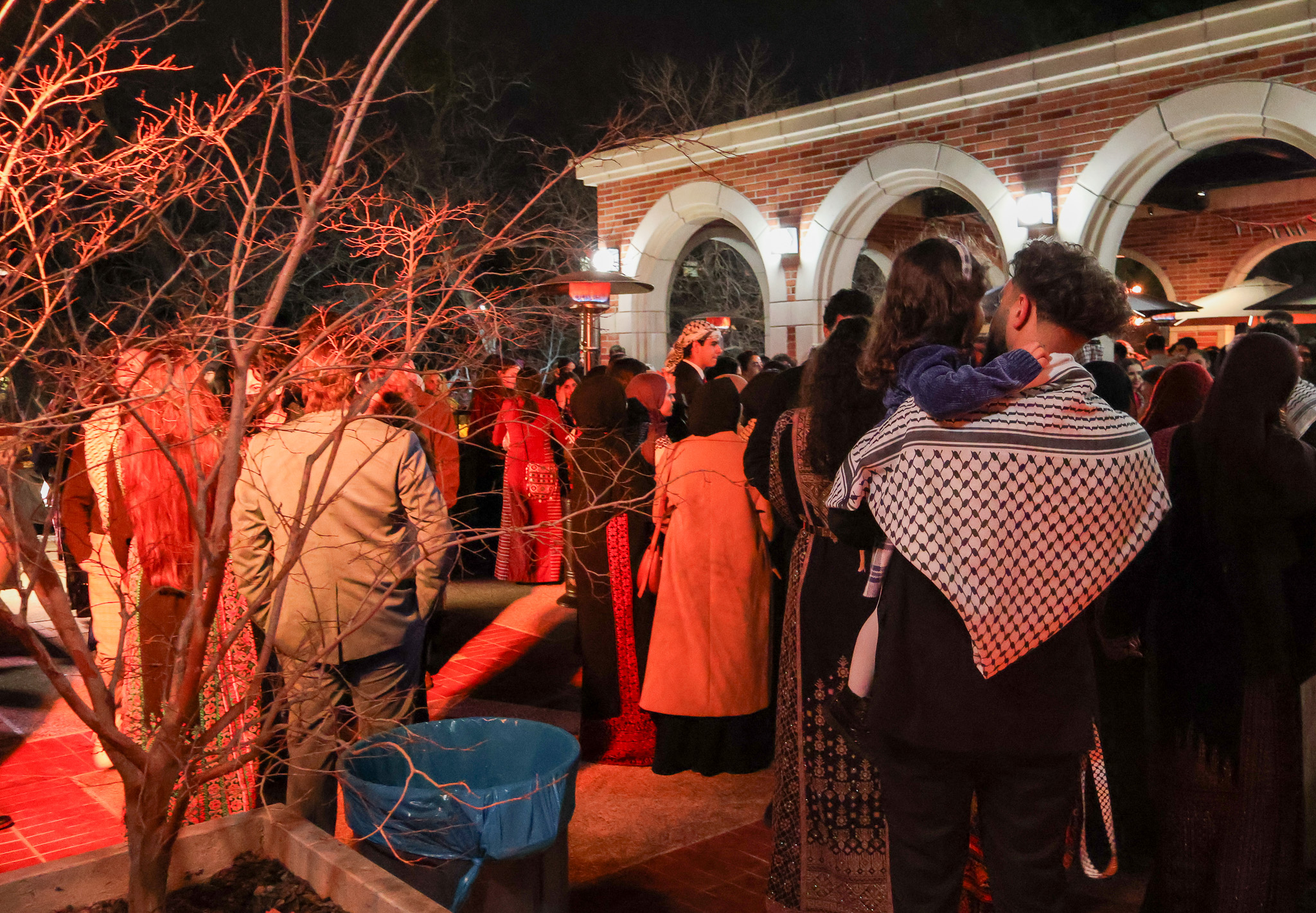
Rayan said watching communities come together was their favorite aspect of Palettes for Peace and that PCRF was working to ensure more people had the opportunity to learn about the show next year.
Bruton also said he found it heartwarming that so many people were willing to participate in Palestinian-related events, especially attendees who were not of Arab or Muslim descent.
He added that while he planned to make the event “as inviting as possible” in the future, he still had one goal for the present: surprising his aunt by buying back the heirlooms she had donated.
“What this event is for is to humanize Palestinians and de-politicize them because although an existence of a people group is inherently political, we have to show people that Palestinians are creative, artistic, loving,” Bruton said. “We want people to love Palestinians for who they are, not just for what they represent politically.”



